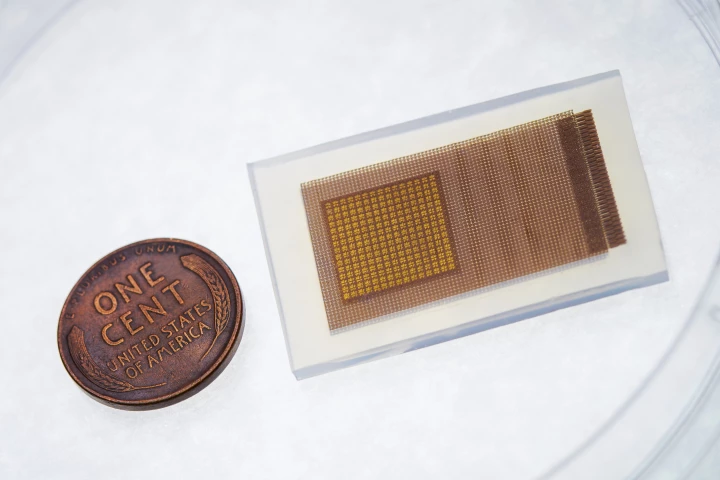wearable electronics
-
While many parents extol the virtues of breastfeeding, it can be hard to tell how much milk a breastfeeding infant is consuming. A new wearable device addresses that problem, using an electrical current to gauge milk intake in real time.
-
Hyundai Motor Company and Kia Corporation have teamed up to create the "X-ble Shoulder," a wearable robot designed to enhance industrial efficiency and reduce musculoskeletal injuries and fatigue.
-
A new soft harness system out of the Technical University of Munich works like a pair of shorts to reduce the exertion needed to walk or jog by up to 18%. The system is easy to put on and take off and holds promise for helping anyone get more mobile.
-
In a crowd, background noise can make it hard to hear people talking. But soon we could be wearing headphones that use AI to filter out noise that’s more than a few feet away, creating a “sound bubble” that lets you focus on your own conversation.
-
As we're increasingly plugged-in to a 24/7 cycle of news, entertainment and social media, it is becoming harder to find time to switch off to practice self-care. This smart device, with the help of AI, aims to get any brain on the right track.
-
As the daylight hours shrink and temperatures drop, it's easy to spend more time indoors. But new research has shown that by self-monitoring time out in the sunshine – also linked to physical activity – can help treat seasonal mood disorder symptoms.
-
A new set of 'powered pants' can boost your leg strength as much as 40%, or make you feel around 30 lb (14 kg) lighter, according to Google X Labs spinout Skip. This 'mountain goat' exoskeleton aims to eliminate physical barriers to outdoor hiking.
-
A wearable ultrasound patch could soon be saving lives, by monitoring the blood flow in hospital patients' brains. The device is only about the size of a postage stamp plus it works continuously, unlike traditional methods.
-
There are now a number of gloves that deliver tactile sensations to VR users' fingertips when they touch virtual objects. The Phantom glove is unique, however, in that it doesn't cover the fingers, leaving them free for real-world interactions.
-
Soft robotic devices often need to sense both mechanical deformation and changes in temperature, requiring multiple integrated sensors. ChromoSense technology, however, combines both functions in one simple, robust, color-changing device.
-
The traditional white cane may never become completely obsolete, but there certainly are a number of devices that could give it a run for its money. One of the latest is the GUIDi, which guides blind users via cameras and buzzers on a belt.
-
Researchers at Northwestern University have developed a non-invasive wearable electronic ear that's designed to wirelessly monitor what's going on inside a patient's body in real time, and found it to perform with "clinical-grade accuracy."
Load More











